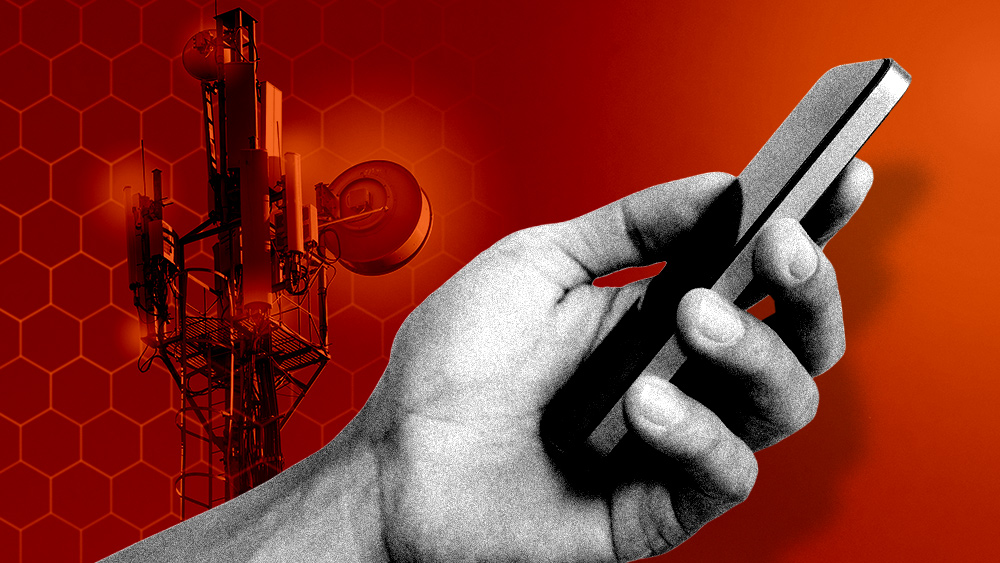Learn more about ‘selfie wrist’ – and why it’s a real problem
03/10/2019 / By Rhonda Johansson

Doctors are now warning that taking selfies can result in injury due to people becoming unaware of their surroundings. A review of four case studies conducted by researchers at University Hospital Galway highlights the risk of self-induced trauma caused by inattentiveness when taking a selfie. These injuries mostly occurred in the upper extremities, particularly in fractures along the distal radius, causing a new type of trauma called “selfie wrist.”
In all of the cases reviewed, it was seen that the arm that was injured was the less dominant one, or the one not carrying the mobile device. This suggests that people are more likely to protect their phone (and dominant arm) when experiencing a fall or accident. Interestingly, none of the people reviewed were using any other accessory device, such as a selfie stick. All of them were trying to take a picture of themselves in odd angles or in public places and did not notice that they were in immediate danger.
For example, a 17-year old female fell down while attempting to take a selfie while running up a flight of stairs. As she tripped, she placed her left hand (the less dominant limb) to protect her face and sustained a broken wrist. She had to wear a cast for six weeks.
Similarly, a 40-year-old woman broke her wrist after she tried to take a selfie on uneven ground at a well-known tourist attraction. As she was adjusting for the “perfect” angle, she took a few steps backwards and fell on rocks. Her wrist needed to wired with steel pins for four weeks.
These injuries are no longer few and far between. Medical professionals are seeing a rise in cases of people injuring themselves because of selfies. The “selfie wrist” phenomenon is not only limited to accidents and falls, as well. Dr. Levi Harrison, an orthopedic surgeon based in California, told Medical Daily that the condition is “what happens [when] the nerves [in the carpal tunnel] become inflamed and angry.”
Selfie wrist is similar to overuse injury, and may also occur when a person constantly takes selfies by flexing their wrist inwards. This is not a natural position and can cause repeated stress along the wrist, resulting in damage.
Deaths, injuries – because of a selfie
In 2015, the Russian government released a “Safe Selfie” guide that encouraged people to practice good habits while taking a selfie. Using various infographics, the guide attempts to explain the dangers of trying to take a photo of one’s self while driving a car, being in a public space, walking along a railroad, or hanging out in a dangerous area. It is mentioned that people often lose their spatial perception as they try to take a selfie. This lack of awareness can be dangerous and can result in injury or even death.
A 2018 global study revealed that 259 people have died between 2011 and 2017 in an attempt to take an “extreme selfie.” These are self-taken shots on tops of mountains, tall buildings, and lakes. Researchers of this study noted that drowning, transport accidents, and falling were the most common causes of death. These numbers have prompted researchers at the U.S. National Library of Medicine to recommend “no selfie zones” at dangerous spots.
Among those who died while trying to take a selfie, 72.5 percent were men. Many selfie-related deaths occurred in India, Russia, the United States, and Pakistan.
Researchers warn that deaths or injuries happening because of selfies may rise in the next few years as more people become obsessed with their social media image. (Related: If you enjoy taking “selfies,” you could be a psychopath.)
Research.news has more articles that talk about the dangers of social media.
Sources include:
Tagged Under: broken wrist, Fractures, Glitch, mobile devices, self-induced trauma, selfie, selfie risk, Social media
RECENT NEWS & ARTICLES
COPYRIGHT © 2017 GLITCH.NEWS
All content posted on this site is protected under Free Speech. Glitch.news is not responsible for content written by contributing authors. The information on this site is provided for educational and entertainment purposes only. It is not intended as a substitute for professional advice of any kind. Glitch.news assumes no responsibility for the use or misuse of this material. All trademarks, registered trademarks and service marks mentioned on this site are the property of their respective owners.




















